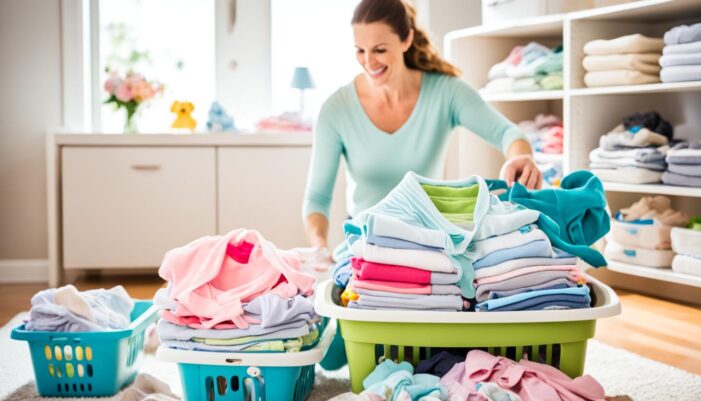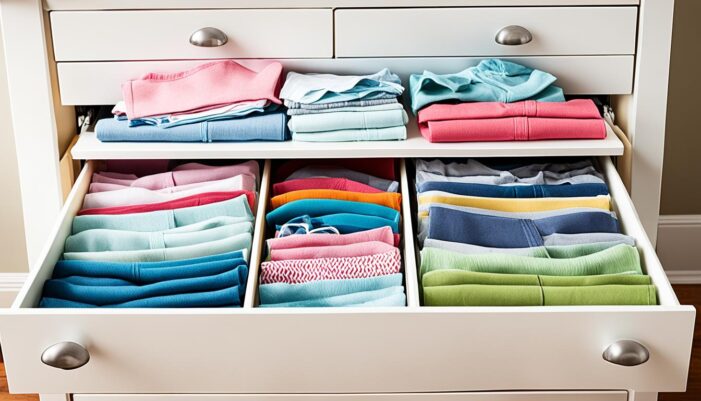Maintaining order in a baby’s ever-growing wardrobe can be a daunting task for new parents. From sorting clothes by size to purging outgrown items, this comprehensive guide offers clever hacks and practical tips to help you maximize space and stay on top of your little one’s closet organization. Learn how to sort, store, and maintain a well-organized baby clothing system that saves time and sanity.
Key Takeaways
- Develop a system for sorting baby clothes by size to stay on top of changing wardrobes
- Store outgrown items in labeled bins or boxes to easily access them when needed
- Utilize vertical space with shelves, bins, and hanging organizers to maximize storage
- Regularly purge and donate clothes your baby has outgrown to maintain a clutter-free closet
- Invest in space-saving storage solutions like vacuum-sealed bags and compression cubes
Sorting and Storing Baby Clothes
Organizing your baby’s ever-growing wardrobe can be a daunting task, but with a few clever tips, you can streamline the process and maximize the available space. The key is to sort clothes by size and stash away older sizes to maintain a well-organized baby closet.
Sort by Size
Begin by sorting your baby’s clothes into piles based on current, upcoming, and outgrown sizes. This will help you quickly identify what fits now and what can be stored for later use. Separate onesies, tops, bottoms, and outerwear to get a clear picture of your little one’s clothing needs.
Stash Away Older Sizes
As your baby grows, it’s essential to rotate through clothing sizes and store the outgrown items. Invest in some durable storage bins or boxes and label them clearly with the size and season. This will make it easy to access the right clothes as your baby grows. Remember to store clothes in a cool, dry place to prevent damage or discoloration.
| Clothing Size | Typical Age Range | Quantity Needed |
|---|---|---|
| Newborn | Birth to 3 months | 6-8 outfits |
| 3 months | 3 to 6 months | 8-10 outfits |
| 6 months | 6 to 9 months | 10-12 outfits |
| 9 months | 9 to 12 months | 12-14 outfits |
By sorting baby clothes by size and storing outgrown baby clothes in a systematic manner, you can maintain a well-organized baby wardrobe and ensure your little one always has the right fit. Remember to label storage bins clearly and rotate baby clothing sizes as your baby grows.
Purging and Maintaining Organization
Keeping your baby’s closet organized and clutter-free is an ongoing task, but the rewards are well worth the effort. Regular purging and maintenance are key to maintaining a tidy nursery and ensuring your little one has easy access to the clothes they need.
Start by going through your baby’s clothes every few months, sorting them into three piles: keep, donate, and store. Outgrown or rarely worn items should be neatly folded and stored in labeled bins for potential future siblings or donated to local charities. This process not only declutters the nursery but also ensures your baby always has the right size clothing at their fingertips.
- Purge baby clothes that no longer fit or are rarely worn
- Sort items into keep, donate, and store piles
- Donate gently used clothing to friends, family, or local charities
- Store sentimental or future-use pieces in labeled bins
- Maintain this routine to prevent the nursery from becoming overwhelmed
Developing a regular purging and organizing system will save you time, space, and stress in the long run. By keeping your baby’s closet decluttered and well-maintained, you’ll be able to easily find the right clothes and avoid the headache of a cluttered nursery.

“A tidy nursery leads to a tidy mind – and a happier, more organized mama.” – Parenting Expert, Sarah Johnson
when can a baby sleep with a stuffed animal?
According to the American Academy of Pediatrics, it’s recommended to wait until your baby is at least 12 months old before introducing a stuffed animal or any soft bedding into their sleep environment. Until then, the safest sleep setup for infants is a bare crib with a firm mattress and no loose items that could pose a suffocation risk.
Once your little one reaches their first birthday, you can gradually start incorporating a small, breathable stuffed animal or other soft toy into their sleep space. However, it’s essential to always supervise playtime to ensure your baby’s safety. Soft toys should be large enough that they can’t fit entirely into your baby’s mouth, and they should be made from materials that won’t cause any choking hazards.
Adhering to safe sleep guidelines, such as those recommended by the SIDS (Sudden Infant Death Syndrome) Prevention campaign, is crucial for reducing the risk of SIDS and creating a comfortable, nurturing environment for your growing child. By following these guidelines and introducing soft toys thoughtfully, you can help your baby transition to a cozy, yet safe, sleep setup as they reach this important milestone.
FAQ
How can I sort and store baby clothes effectively?
Sort your baby’s clothes by size to streamline the organization process. Separate items into piles based on current, upcoming, and outgrown sizes. This will help you identify what fits now and what can be stored away. When storing older sizes, label the storage bins clearly to easily access the right clothes as your baby grows.
How often should I purge my baby’s wardrobe?
Regularly purging and rotating through clothing sizes is key to maintaining a well-organized baby wardrobe. Go through your baby’s clothes every few months and purge items that no longer fit or are rarely worn. Sort them into piles: keep, donate, and store. Pass along gently used clothing to friends, family, or local charities, and store sentimental pieces or clothes you want to save for future siblings in labeled bins.
When can I introduce a stuffed animal or soft toy to my baby’s sleep environment?
The American Academy of Pediatrics recommends waiting until your baby is at least 12 months old before introducing soft bedding or stuffed animals in the crib. Until then, the safest sleep environment for infants is a bare crib with a firm mattress and no loose bedding. Once your baby reaches their first birthday, you can gradually introduce a small, breathable stuffed animal or other soft toy to their sleep space, but always supervise playtime to ensure safety.

